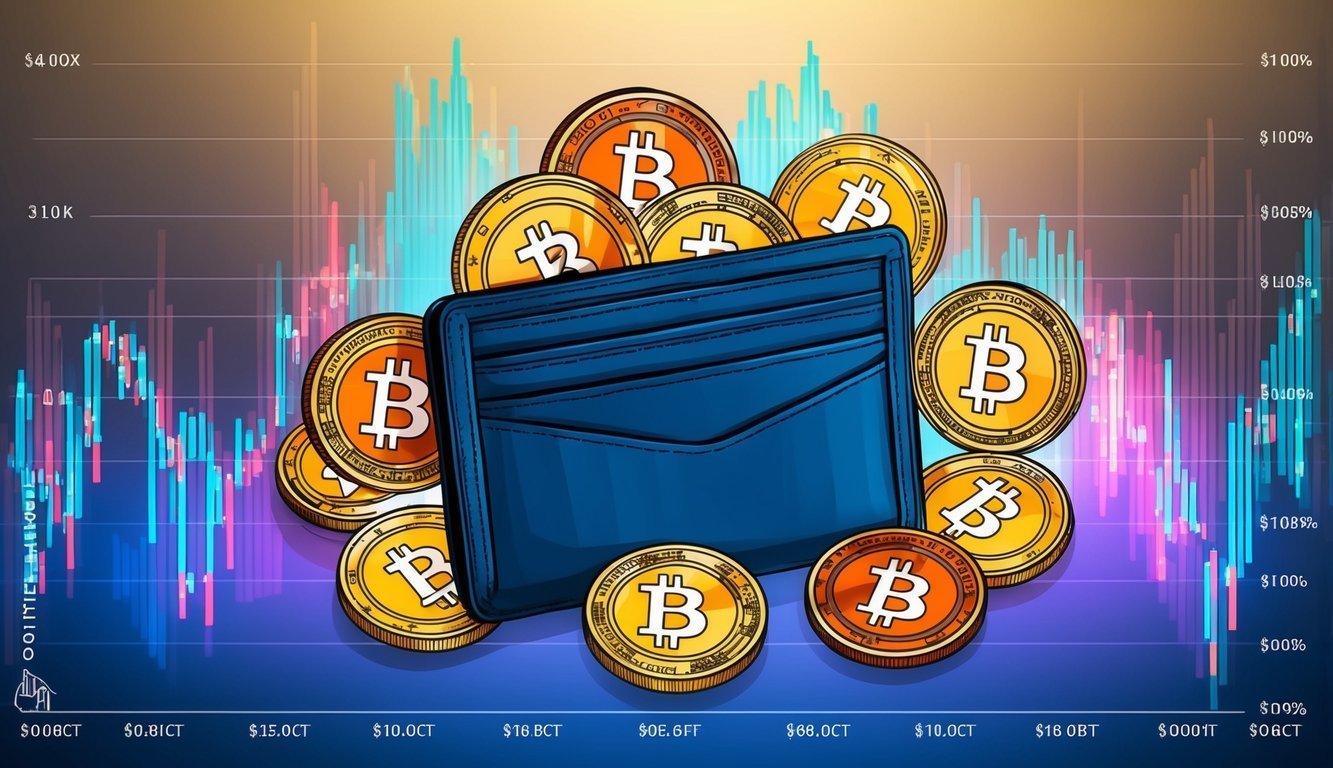Crypto exchanges charge fees for their services, and these costs can eat into your profits if you’re not careful.
Most exchanges charge between 0.1% to 0.5% per trade, but fees can vary widely depending on the platform and the type of transaction.
Some exchanges have maker-taker fee structures, where maker fees can be as low as 0% while taker fees are higher.
It’s not just trading fees you need to watch out for. Many exchanges also charge withdrawal fees when you move your crypto off the platform. These can add up, especially for smaller transactions. Some platforms even sneak in extra costs like deposit fees or account maintenance charges.
To get the best deal, you’ll want to shop around and compare fees across different exchanges. Keep in mind that the cheapest option isn’t always the best – factors like security, available trading pairs, and user experience are also important.
By understanding the fee structure and choosing the right platform for your needs, you can keep more of your hard-earned crypto.
Key Takeaways
- Crypto exchange fees typically range from 0.1% to 0.5% per trade
- Additional costs like withdrawal fees can significantly impact your bottom line
- Comparing fees across platforms can help you maximize your crypto profits
Understanding Exchange Fees
Crypto exchange fees can eat into your profits if you’re not careful. Let’s break down the different types of fees, how they work, and what affects them.
Different Types of Crypto Exchange Fees
When you trade crypto, you’ll come across various fees. Trading fees are the most common. These are charged when you buy or sell crypto on an exchange. In addition to trading fees, there may be withdrawal fees, which are charged when you transfer your crypto assets off the exchange. It’s important to understand all the costs associated with trading to maximize your profits. For a comprehensive overview, you can find “crypto transaction fees explained” on various platforms that detail the different types of fees you might encounter while trading.
Deposit and withdrawal fees are also important. Some exchanges charge you to put money in or take it out.
Don’t forget about maker and taker fees. Maker fees are for orders that add liquidity to the market, while taker fees are for orders that remove it.
Some exchanges have flat fees, while others use percentage-based fees. It’s good to know which type you’re dealing with.
How Fee Structures Work
Fee structures can be tricky. Most exchanges use a tiered system, where the more you trade, the lower your fees.
Coinbase, for example, starts with high fees. Their maker fees begin at 0.4% and taker fees at 0.6% for small trades.
But if you trade a lot, fees can drop. Some big traders pay no maker fees at all.
Watch out for hidden fees too. Some exchanges tack on extra charges for certain services.
The Impact of Trading Volume and Liquidity
Your trading volume matters a lot. Most exchanges look at your 30-day trading volume to set your fees.
Higher volume usually means lower fees. If you trade $100,000 in a month, you’ll likely pay less than someone trading $1,000.
Market liquidity affects fees too. In busy markets with lots of trades, fees tend to be lower.
But in less active markets, you might pay more. Exchanges do this to encourage more trading and boost liquidity.
Remember, fees can change based on market conditions. It’s smart to keep an eye on them as you trade.
Exploring Fees on Popular Platforms
Crypto exchange fees can vary a lot. Some platforms offer low trading costs, while others have unique perks. Let’s look at how fees stack up across popular exchanges and what special features you might find.
Fee Comparison Across Exchanges
Binance often has the lowest trading fees, starting at just 0.1%. Coinbase charges more, with fees up to 0.6% for some trades. Kraken sits in the middle, with fees ranging from 0.16% to 0.26%.
KuCoin and Bybit also offer competitive rates. They’re worth checking out if you trade a lot.
Here’s a quick look at basic trading fees:
- Binance: 0.1%
- Coinbase: 0.5% – 0.6%
- Kraken: 0.16% – 0.26%
- KuCoin: 0.1%
- Bybit: 0.1%
Remember, these are just starting points. Fees can change based on how much you trade or what coins you’re buying.
Unique Fee Features and Discounts
Some exchanges offer cool ways to save on fees. Binance gives you a discount if you use their BNB token to pay fees. This can cut your costs by up to 25%.
Crypto.com has a tiered system where you can get lower fees by staking their CRO token. The more you stake, the less you pay.
Gemini stands out by offering some free withdrawals each month. This is great if you move crypto around a lot.
eToro takes a different approach. They don’t charge trading fees on stocks in some countries. Instead, they make money on the spread for crypto trades.
Always check an exchange’s full fee schedule. Some have hidden costs that can add up fast.
Additional Costs and Considerations

Crypto exchange fees go beyond the basic trading costs. Hidden fees and extra charges can eat into your profits if you’re not careful. Let’s look at some key factors that impact your bottom line.
Understanding the Spread
The spread is the difference between buy and sell prices. It’s an extra cost that’s easy to miss. On some exchanges, the spread can be quite wide, especially for less popular coins.
You might see a coin listed at $100, but when you try to buy it, the price jumps to $101. That’s the spread in action. It’s like a hidden fee that makes your trades more expensive.
Busy trading times can make the spread bigger. Less active markets often have wider spreads too. Keep an eye on this when you’re planning your trades.
To save money, look for exchanges with tight spreads. Compare different platforms to find the best deals. Remember, a small difference in spread can add up fast if you trade a lot.
Payment Methods and Related Fees
How you pay for crypto can change your costs. Each payment method comes with its own set of fees.
Bank transfers are often the cheapest way to buy crypto. They might even be free on some exchanges. Credit cards are usually the most expensive. You could pay up to 5% extra for using a card.
PayPal is handy but can be pricey. Some exchanges charge extra for PayPal deposits. Watch out for currency conversion fees if you’re not using USD.
Here’s a quick breakdown:
- Bank transfer: 0-1%
- Credit/debit card: 3-5%
- PayPal: 2-4%
- Wire transfer: Flat fee (usually $10-$30)
Choose your payment method wisely. The right choice can save you a bunch of money in the long run.
Advanced and Specialty Trading Fees
If you’re into more complex trading, you’ll face extra costs. Margin trading, futures, and other advanced tools often come with higher fees.
Margin trading lets you borrow money to trade. It’s risky and can be expensive. You’ll pay interest on the borrowed funds. Rates can be as high as 0.1% per day.
Futures trading usually has its own fee structure. You might pay fees to open and close positions, and some exchanges also charge a funding rate for holding positions overnight.
Here are some fees to watch for:
- Liquidation fees
- Overnight funding rates
- Settlement fees
Advanced trading strategies can boost your profits, but only if you manage the costs well. Always factor in these extra fees when planning your trades.
Security, Support, and Compliance

Crypto exchanges charge fees to cover security, support, and compliance costs. These services protect your funds and help you trade safely.
The Role of Security Measures in Fees
Security is crucial for crypto businesses. Exchanges invest in strong security to guard against hacks and theft. This costs money, which is why you pay fees.
Security measures include:
• Two-factor authentication
• Cold storage for most funds
• Regular security audits
These steps keep your crypto safe, but they’re not cheap. Exchanges pass some costs to you through fees.
Customer Support and Resources
Good customer support is key when you’re dealing with money. Exchanges need staff to answer questions and solve problems.
Top exchanges offer 24/7 support. This means you can get help anytime. Many also provide:
• Educational articles
• Video tutorials
• FAQs
These resources help you trade better and understand crypto. Creating and updating them takes time and money. Your fees help pay for these services.
Frequently Asked Questions
Crypto exchange fees can be tricky to navigate. Let’s dive into some common questions about trading costs, platform comparisons, and why fees vary.
How can I calculate the fees for trading crypto?
To figure out your trading fees, check the exchange’s fee schedule. Most platforms charge a percentage of your trade value. For example, if you buy $100 of Bitcoin with a 0.1% fee, you’ll pay $0.10 in fees. Some exchanges use a maker-taker fee model, which can affect your costs based on whether you add or remove liquidity from the market.
Which platform offers the lowest fees when exchanging cryptocurrencies?
MEXC currently boasts the lowest trading fees in the crypto market. They offer 0% maker fees for futures trading and a tiny 0.01% taker fee. Other low-fee options include Binance and Kraken. Always compare fee structures across different platforms to find the best deal for your trading style.
What’s the deal with withdrawal fees on crypto exchanges?
Withdrawal fees cover the cost of moving your crypto off the exchange. These fees vary widely between platforms and cryptocurrencies. Some exchanges charge a flat fee, while others take a percentage of your withdrawal amount. Solana and XRP typically have very low withdrawal fees, often less than a penny per transaction.
Are there any crypto exchanges out there that don’t charge fees?
Completely fee-free crypto exchanges are rare. Some platforms offer fee-free trading for certain pairs or during promotional periods. However, these exchanges usually make money in other ways, like wider spreads between buy and sell prices. Always read the fine print to understand the true cost of trading.
Can you tell me how the top crypto exchanges stack up against each other fee-wise?
Fee structures vary, but here’s a quick comparison: Crypto.com charges 0.075% for spot trades, while Binance fees start at 0.1% and can go lower based on your trading volume. Coinbase Pro fees begin at 0.5% for low-volume traders. Remember, these rates can change, so always check the latest fee schedules.
Why are some crypto exchanges’ fees higher than others?
Exchange fees differ for several reasons. Some platforms charge more for better security measures or customer support. Others offer lower fees to attract more users. The exchange’s size, location, and regulatory environment can also impact fees. Newer or smaller exchanges might have higher fees to cover operational costs.




